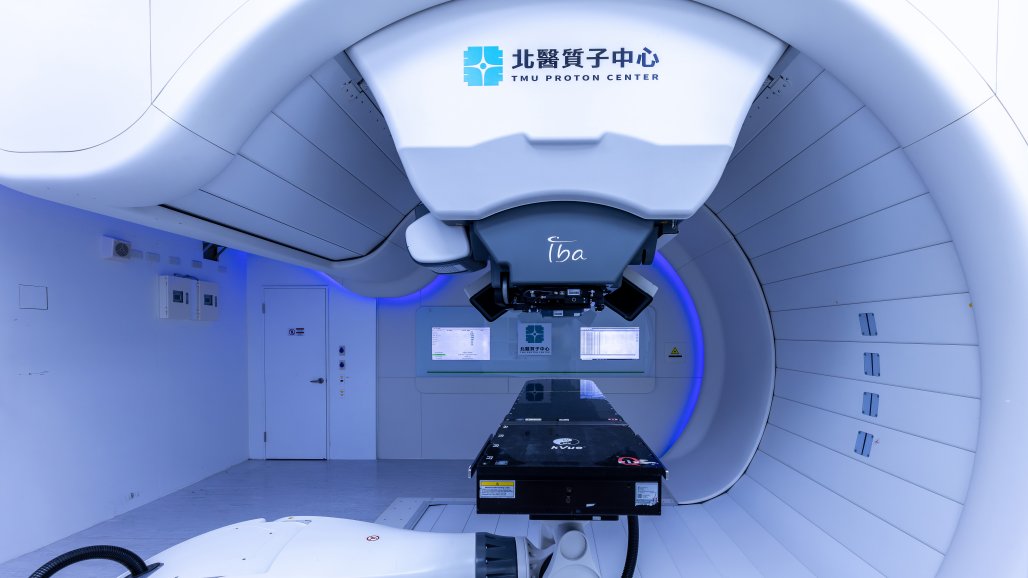Building a future-ready proton therapy institution: the strategic vision of a Proton Center Director
Prof. Dr. Jeng-Fong Chiou, Director of the Proton Center, former President of TMUH and Chairman of the Radiation Oncology Society explains why TMUH chose the compact ProteusONE proton therapy system and how it delivers clinical, financial, and reputational benefits. "We are in the busiest area of Taipei City, where there is no extra space”. The ProteusONE system, with its compact footprint and energy-efficient superconducting design, provided the ideal solution for fitting into tight urban settings, even underground, while still offering full clinical capabilities for cancer treatment. Moreover, Dr. Chiou explains that IBA’s reliability and resource system, its close involvement from design to daily operations, and seamless 24/7 support also contributed to TMUH’s decision to invest in ProteusONE: "From the beginning of our establishment, we engaged in collaborative teamwork with the IBA team… The IBA team and the hospital team merged into one team”. He emphasizes how the close collaboration with IBA brought peace of mind to the TMUH teams and ensured that the Proton Center operates smoothly and treatments are never interrupted.
As chairman of the Radiation Oncology Society, Prof. Chiou understands the national implications: "Curing patients without side effects helps reduce the overall medical burden. It saves the national medical budget. This is a win-win”. He also points out that “The establishment of a proton therapy center not only serves patients, but also significantly increases the reputation of the hospital”. The introduction of proton therapy has not only improved the quality of care but also expanded TMUH’s clinical reach. Pr. Chiou notes that the proton center has increased the overall number of cancer patients treated at TMUH, regardless of the type of treatment: “In the first year, the number of patients with cancer has increased by 10%, in addition to those who received proton therapy”.
When addressing one of the most common concerns about proton therapy, the initial investment, Dr. Chiou explains: “Many people worry about the huge investment in establishing a proton center. But the benefits are not only in increasing the number of patients but also in providing more trust and choices for patients. Investing in proton therapy will lead to the vigorous development of the entire institution”.
Watch Prof. Dr. Jeng-Fong Chiou’s full video here.
Integrating proton therapy to improve patient outcomes: the vision of the Deputy Director
Prof. Dr. Jo-Ting Tsai, Professor and Deputy Director, discusses the expanded capabilities that ProteusONE brought to the Radiation Oncology department: “Now, the proton center allows us to solve previously difficult cases, such as head and neck cancer or some patients who relapsed after radiotherapy and need re-treatment. It is a good choice”. By integrating proton therapy alongside traditional photon services, TMUH has established a cooperative referral process that benefits both the Proton Center and referring departments as well as the patients themselves: “They can transfer their patients who must undergo proton therapy to us, and we will transfer them back for follow-up treatment. This cooperative relationship has become a win-win process”.
Dr. Tsai recounts the rigorous evaluation process, visiting proton centers worldwide, and explains that ProteusONE’s compact design fits seamlessly into the metropolitan hospital building, as well as the clinical requirements for treating various cancer types at their center: “We finally selected IBA's ProteusONE because it can best meet our clinical requirements. The compact direct-point treatment machine ProteusONE actually meets the needs of many patients in our current metropolitan center.”
She also shares a memorable patient story: a head and neck cancer survivor who did not lose her sense of taste after proton therapy treatment, allowing her to feel the delicious taste of a cake she had baked.
Watch Prof. Dr. Jo-Ting Tsai’s full video here.
From cure to quality of life: clinical impact of ProteusONE according to the Director of the Radiation Oncology Department
Dr. Hsin-Lun Lee, Director of the Department of Radiation Oncology, emphasizes the evolution from cancer survival to long-term quality of life: "In the past 20 years, we cured more than half of cancers. Now, we must focus on reducing side effects”. "Proton therapy is the trend of the future and will trigger the next revolution in radiotherapy”. He recounts a touching success: "Our first patient, an eight-year-old girl, completed her treatment in time to go back to school for her birthday.”
When discussing the choice of ProteusONE proton therapy system, Dr. Lee emphasizes: “Our team visited many medical centers, and ProteusONE stood out as the most advanced and futuristic. We have no regrets choosing it. The system is upgradable, and IBA’s ongoing R&D ensures we can adapt to new clinical needs and technological advancements.”
Among patients receiving proton therapy with ProteusONE at TMUH, Dr. Lee highlights the breadth of indications, illustrating how ProteusONE’s versatility helps treat a broad mix of cancer types: “We treat a variety of cancers, including head and neck cancers, breast cancer, liver cancer, as well as many patients with prostate cancer, lung cancer, and pediatric cancers.”
Dr. Lee also highlights the successful treatment ramp-up in the first year, with over 200+ patients treated, averaging 20-25 patients per day. He notes that “thanks to ProteusONE’s high treatment efficiency, more patients are cured compared to conventional proton treatment devices.”.
Watch Dr. Hsin-Lun Lee’s full video here.
Energy efficiency and patient comfort: the Medical Physicist’s point of view on ProteusONE
Shiu-Chen Jeng, Consultant Medical Physicist, explains how ProteusONE transforms proton therapy through its advanced engineering and patient-centered design. Based on his over 30 years of experience, he highlights three core advantages of ProteusONE: the first is its superconducting design that dramatically lowers electricity usage for sustainable operation; "The main reason I like ProteusONE is its superconducting design, which reduces electricity consumption. That makes operations more sustainable“. The second is its integrated cone-beam CT that ensures accurate positioning. And the third reason is ProteusONE’s open-gantry design, which enhances comfort, especially for pediatric cases: "Medical staff can assist in positioning from various angles, and set up the monitoring equipment without any restrictions on the medical lines when performing pediatric treatment.”
He also describes the calming ambient lighting and centralized imaging and treatment workflow that reduces patient stress and accelerates session times. Drawing on the global track record of treating more than 300,000 patients with proton therapy, he encourages institutions to embrace ProteusONE to drive progress in cancer care, closing with a bold call to action: "Don’t be conservative. Choose ProteusONE, otherwise you’ll never progress.”.
Watch Shiu-Chen Jeng’s full video here.
Intuitive design and non-coplanar possibilities: the Radiation Therapist’s view on daily operations with ProteusONE
With over 25 years of experience, Senior Radiation Therapist Mei Ling Chen shares how ProteusONE enhances daily practice and patient care. She describes three standout features, such as the intuitive control interface, crystal-clear cone-beam CT (CBCT) imaging, and lightweight handheld remote, that give therapists confidence and precision in every session. The machine layout leaves ample room for drug carts and monitoring equipment, streamlining pediatric anesthesia setups: “There is enough space next to it for us to place the drug cart or some monitoring equipment that is necessary for pediatric anesthesia. As such, it is very convenient during the whole treatment process.”
ProteusONE’s full 360° open-access gantry allows flexible non-coplanar beam angles and removes irradiation restrictions, ensuring tumors can’t hide behind blind spots: “The ProteusONE’s gripper-like design also offers high flexibility in non-coplanar angles. That way we can make sure that there are no dead angles during treatment and that tumors have nowhere to hide”. She also highlights how the versatile imaging suite (CBCT, orthogonal, and oblique views) paired with the remote-control workflow help reduce room entries and minimize treatment time: “This helps to shorten the treatment time for patients, avoiding the possibility of patients moving during long-term operation. As a result, treatment is more accurate”. She also highlights the rapid treatment time: “ProteusONE is also very fast. In our experience of at Taipei Medical University, brain cancer treatment with cone-beam image processing takes only about 15 minutes, and patients can complete the treatment quickly”. The Phillips Ambient Experience, she adds, helps create a comfortable and soothing experience for patients and staff: "Patients can choose different scenario videos every day which helps patients relax and cooperate during the treatment process.”.
Watch Mei Ling Chen’s full video here.
The ProteusONE system at Taipei Medical University Hospital stands as a model for how compact, efficient, and patient-centered proton therapy can transform cancer care in the world’s busiest urban centers. Through the combined expertise of clinicians, physicists, and therapists, TMUH has set a new standard for operational excellence, clinical versatility, and strategic value, helping patients keep everything but cancer.
Disclaimer: The statements of the healthcare professionals included in their testimonials reflect only their opinions and personal experiences. They do not necessarily reflect the opinion of any institution with which they are affiliated or IBA.



